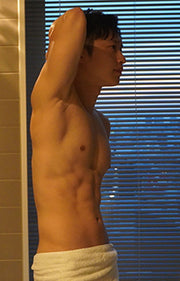History of Vibrators
Table of Contents
The vibrating device industry, and even the adult toy industry, is one of the oldest and still one of the most controversial industries in history.
Although it is downplayed by traditional religious mores and the shame of not being able to expose it to the public, it also serves an instinctive human need and is an important tool in the rational and sometimes biological lives of human beings. Psychological sexual release and spiritual comfort have helped people in every age.
So what is the history of the female vibrator?
Origin
Humans have a long history of using adult toys. They have been using dildos made of stone or wood since the Jomon period, when people began to build a civilization that was distinctly human, and depictions of masturbation remain in prehistoric rock paintings. In present-day Germany, the oldest adult toy discovered by mankind is a dildo, so to speak, made more than 30,000 years ago to resemble a penis.
In the Victorian era, vibrating adult toys were created. At the time, masturbation was viewed in society as an impurity, sin, or shame, and it was widely believed that women suffered from "hysteria" with symptoms of anxiety, irritability, and abdominal discomfort. The disease dates back to the ancient Greeks, and at that time it was believed that women's neurotic behavior was due to the uterus. Thus, the ancient Greeks called the disease "hysteria," after the word "hystera."
"Hysteria" was actually an unfulfilled need, and the solution was to seek therapy or massage. The treatment developed there is called "pelvic massage," in which the patient's hands are placed on the abdomen or fingers are massaged into the vagina or anus, and after a "hysterical burst" the patient returns to a calm, normal state of mental health. The "hysterical bursts" were so-called "orgasms," in which the woman's libido was satisfied and the doctor massaged her pubic area. Due to the large number of patients and the fatigue of the doctors, as well as individual differences, some patients took several hours to climax, and the doctors sometimes suffered from hand cramps. To avoid the strain and fatigue on his own body, the doctor decided to invent a massager to replace the human hand.

A doctor treating a female patient in the movie "Hysteria".
1869: The First Generation Vibrator of the Post-Industrial Age

In the 1870s, the Industrial Revolution brought the steam-powered manipulator. This was the original first-generation vibrator, a manual machine invented by American physician George Taylor that consisted of two parts. The part of the device used by the patient is about the size of a dining room table, with the driving components mounted in the center of the device. In a separate room, away from the patient, a steam-powered machine moves the ball back and forth continuously. However, due to its bulky size and complex construction, it was soon replaced by an electrical device.
1880s: The Electrodynamic Vibrator of the Electric Age
The development of the second industrial revolution ushered in the age of electricity, and the development of electricity led British physician Joseph Mortimer Granville to invent the first electric vibrator in the 1880s.

A still from "Hysteria." The leading man holds in his hand the hero of this era who saved the women.
The 2011 film Hysteria, set in Victorian England, is based on this period. This out-of-time invention opened the door to women's sexual liberation.
1900s: DIY era
With the advent of the electric vibrator, physicians could truly focus on the machine. Looking like a hand drill and operated and controlled by the user, until the 1930s physicians treating hysteria used it in combination with several medications to treat the condition.

Various vibrators

Various vibrators
1930-1940: Household Vibrators
With the advent of the DIY vibrator, the number of patients treated for hysteria gradually declined, and instead, the number of users of home vibrators increased. With the widespread use of lightweight materials, vibrators became more portable and compact in design from the 1930s onward, while at the same time becoming more colorful in appearance, with very modern and decorative packaging. This led to a significant increase in the popularity and sales of vibrators.

Vibrators are increasingly decorative in design.
Thus, vibrators were called the "five major home appliances" of the time, along with electric kettles, sewing machines, electric fans, and toasters, due to the current situation in which people were enthusiastically seeking them. Vibrators were also advertised everywhere. At that time, vibrators were mainly sold as beauty massage products, and their weight-loss effects were advertised.

The most misnamed advertisement ever. At the time, Vice was advertised as a beauty and weight loss product.
1950-1960: The truth comes out
In 1952, the American Psychiatric Association voted to remove "hysteria" from textbooks altogether, as vibrators were marketed merely as beauty and diet products and people remained silent about their true uses. 1953, American sexologist Alfred Kinsey also published two best-selling books on human sexual behavior published two best-selling books on the subject, correctly explaining the orgasmic phenomenon. At this point, the general public had truly and correctly understood women's sexual needs and had begun to accept the vibrator as a sexual tool.
1970-Present: A New Era of Sexual Liberation
The American "Time" magazine once selected the 50 most influential products in history, and Japanese Hitachi Magic Wand was among them. This 1970's Hitachi product used a powerful power supply to generate huge vibrations, resulting in intense pleasure more than it did in 1970's porn movies.

Magic Wand-the prototype for the modern vibrator.
The breakthrough product in vibrating masturbators was the "Rabbit" in the 1890's. In 1984, the Japanese company Vibratex invented a vibrator called the Rabbit, which was a revolutionary product that added clitoral massage. In 1998, it was featured in the classic American drama "Sex and the City," and its appearance in this scene sent shockwaves through society. Sex and the City" has contributed more to women's sexual liberation than anyone else in recent decades. Some scientific journals even called "Rabbit" the "Rolls Royce" of the adult toy world.

Still from "Sex and the City"
Today, the sensitive term "vibrator" is widely accepted by the public, and women no longer have to hide their sexual desires. All kinds of more beautiful and more comfortable adult products are endlessly available, gradually abandoning the realistic form that imitates the male genitalia. Stronger waterproofing, quieter vibration designs, and connections to high-tech elements such as mobile apps and VR scenes are all making adult toy design more relevant and closer to life.







